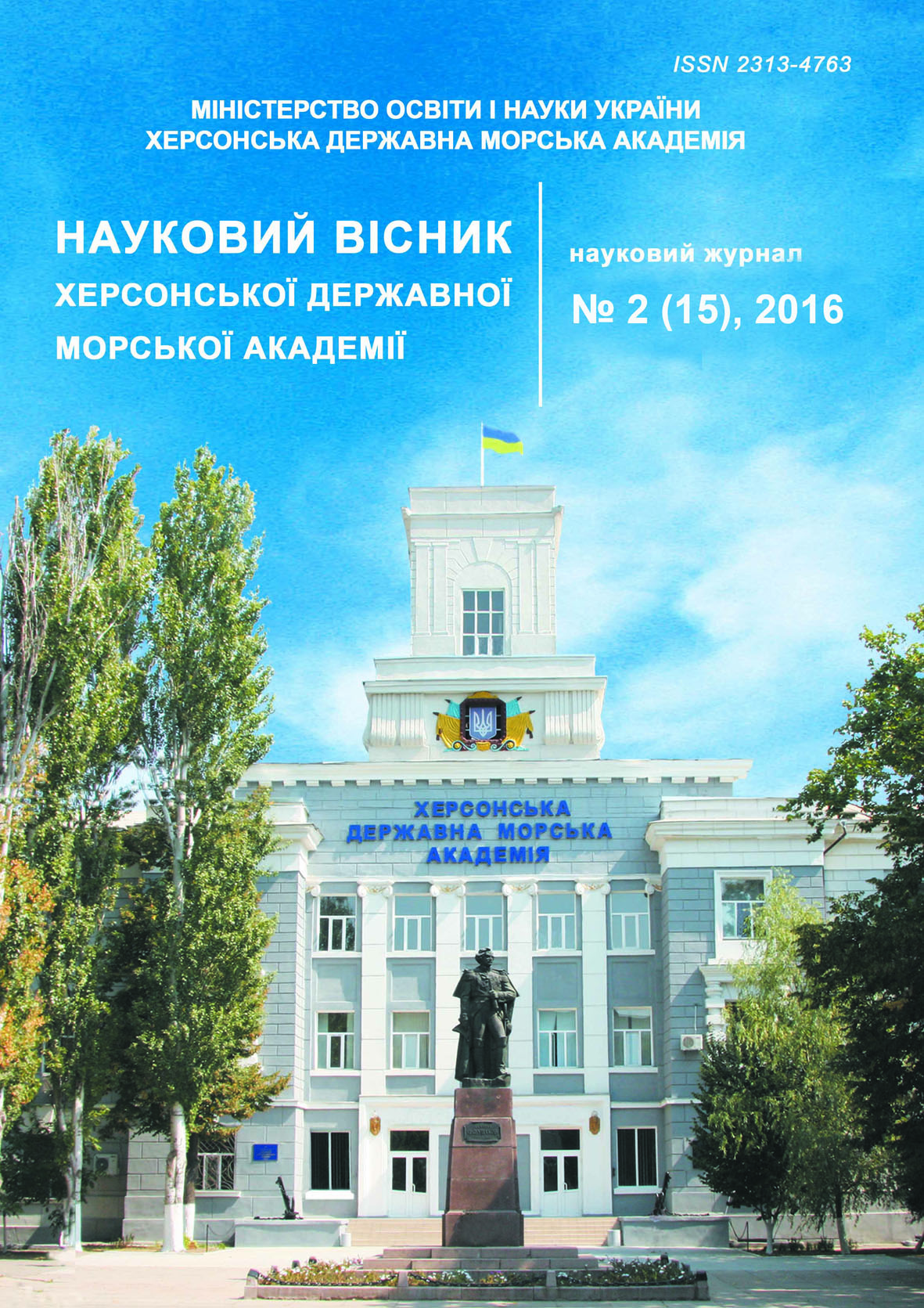COMPARATIVE EVALUATION OF THE METHODS FOR IMPROVEMENT OF SHIPS ENVIRONMENTAL-AND-ENERGY EFFICIENCY
Abstract
Estimation of different ways to improve the environmental and energy efficiency of transport ships has made in the article. The main purpose of study was to compare perspective methods decreasing carbon dioxide emissions that could be implemented at the stage of conceptual design, through the influence on the characteristics of ship power plants. In view of the large number of factors determining the parameters vessel, to quantify energy efficiency need to use multivariate technical and economic analysis with the development of scenarios including probable Coach Lines and the use different kinds of fuels. The article
presents calculated deadweight-dependence of carbon dioxide emissions for tankers, bulk carriers and container ships built after 2007, with imposing of the restrictive IMO curves for different stages of the implementation energy efficiency index. The main scenarios of reducing greenhouse gas emissions for these
transport vehicles groups have been considered inclusion of shaft generators into the propulsive units along with the replacement of fuel oil in the main and auxiliary engines to liquefied natural gas and methanol. Analysis of the calculation results has made it possible to assess the effectiveness of these methods used both individually and in combination, to reduce carbon dioxide emissions.
References
2. Third IMO GHG Study 2014. Executive Summary and Final Report. (2015). London : IMO. http://www.imo.org. Retrieved from http://www.imo.org/en/OurWork/Environment/ PollutionPrevention/AirPollution/Documents/Third%20Greenhouse%20Gas%20Study/GHG3% 20Executive%20Summary%20and%20Report.pdf.
3. Marine NOx Regulation, Taxes and Incentive Schemes. (2015). London : International Association for Catalytic Control of Ship Emissions to Air (IACCSEA). http://www.iaccsea.com. Retrieved from http://www.iaccsea.com/fileadmin/user_upload/pdf/local_marine_nox_regulation_taxes_and_inc entive_schemes.pdf.
4. Study on Tests and Trials of the Energy Efficiency Design Index as Developed by the IMO. (2011). Raisio (Finland) : Deltamarin LTD. http://www.emsa.europa.eu/ Retrieved from http://www.emsa.europa.eu/main/air-pollution/download/1517/1310/23.html.
5. Sail gets a second wind. (2016). The Naval Architect, June, 22-28.
6. MAN takes fuel flexibility to another level. (2013). The Naval Architect, March, 26-30.
7. IMO set to decide on ro-ro EEDI fix. (2013). The Naval Architect, May, 38-42.
8. Guidelines on the Method of Calculation of the Attained Energy Efficiency Design Index (EEDI) for New Ships. (2014). IMO, MEPC.245(66), Annex 5. http://www.imo.org.
Retrieved from http://www.imo.org/en/OurWork/Environment/PollutionPrevention/AirPollution/Documents/245 (66).pdf.
9. Gorbov V. M., Mitienkova V. S. (2012) Otsenka vybrosov dyoksyda uhleroda sudovymy dyzelnymy ustanovkamy. Dvyhately vnutrenneho shoranyia, 2, 92-95.
10. Implementing Energy Efficiency Design Index. (2015). Mumbai : Indian Register of Shipping. http://www.irclass.org. Retrieved from http://www.irclass.org/files/marine_publications/EEDI_2015.pdf.
11. Lingwood J., Knaggs T. (Ed.). (2008). Significant Ships of 2008. London: RINA.
12. Savvides N., Fisk S. (Ed.). (2009). Significant Ships of 2009. London: RINA.
13. ME-LGI Applications. http://marine.man.eu. Retrieved from http://marine.man.eu/two-stroke/2-stroke-engines/me-lgi-engines.






